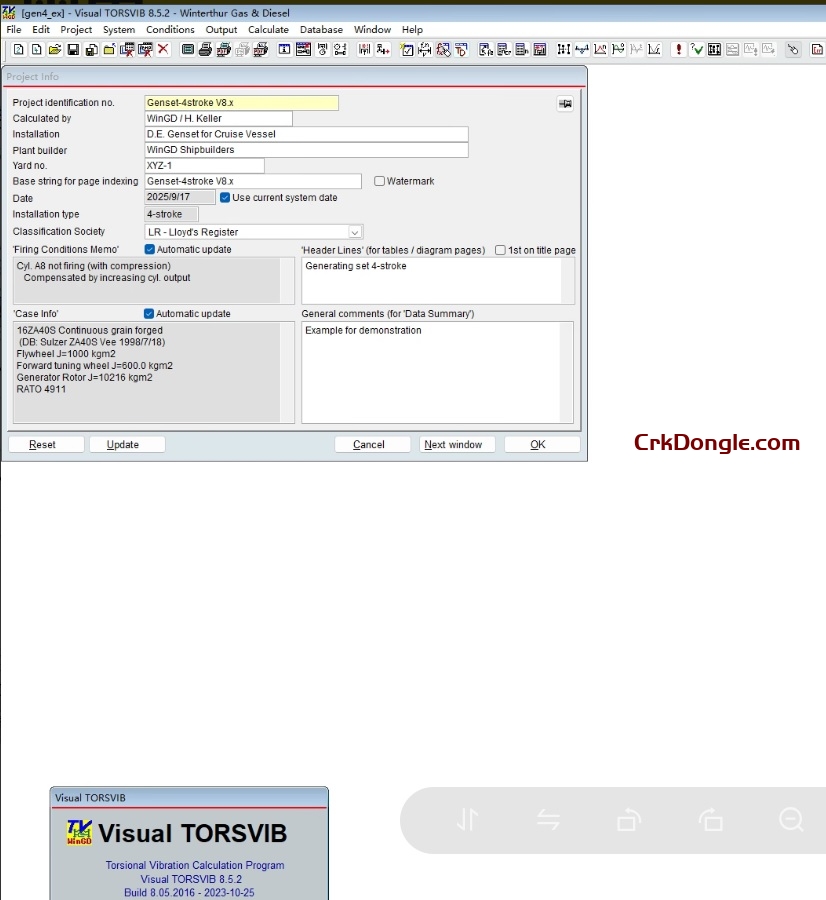Explore Visual TOSVIB v8.5.2, the specialized software for advanced in-situ soil testing. Process, interpret, and report Torsional Shear Vibrating Wire (TOSVIB) data to determine dynamic soil properties like Shear Modulus and Damping Ratio.
Visual TOSVIB v8.5.2 Features | TOSVIB Data Processing & Soil Dynamics Software
Visual TOSVIB v8.5.2: Advanced Software for TOSVIB Test Processing & Soil Dynamics
Visual TOSVIB v8.5.2 is the industry-standard software solution for acquiring, processing, and interpreting Torsional Shear Vibrating Wire (TOSVIB) test data. This specialized program is essential for geotechnical engineers and engineering geologists who need to determine the dynamic properties of soil for seismic analysis and foundation design.
Core Functionality: From Signal to Engineering Parameters
Visual TOSVIB transforms raw vibrating wire signals into critical geotechnical parameters. Its primary function is to calculate the Shear Modulus (G) and Damping Ratio (D) of soils across a range of shear strains, providing vital data for dynamic ground response analysis.
Key Features of Visual TOSVIB v8.5.2
1. Real-Time Data Acquisition & Test Control
-
Live Monitoring: Monitor the vibrating wire signal and vibration decay curves in real-time during the test.
-
Hardware Integration: Directly control TOSVIB probe hardware and set test parameters from within the software interface.
-
Data Quality Assurance: Assess data quality on the fly, allowing for immediate decisions during field investigation.
2. Advanced Signal Processing & Calculation Engine
-
Automated Property Calculation: The software automatically calculates key soil properties using robust algorithms:
-
Shear Modulus (G): Derived from the resonant frequency of the soil-probe system.
-
Damping Ratio (D): Calculated from the logarithmic decrement of the free-vibration decay curve.
-
-
Multi-Strain Analysis: Processes data from tests performed at multiple strain amplitudes to define the complete soil behavior.
3. Comprehensive Data Interpretation & Modeling
-
G-Gamma and D-Gamma Curves: Visualize and analyze the fundamental relationships between Shear Modulus, Damping Ratio, and Shear Strain.
-
Curve Fitting Tools: Fit standard soil models (e.g., Hardin-Drnevich) to your measured data for characterization and prediction.
-
Reference Parameter Determination: Easily determine key design parameters, including the maximum small-strain shear modulus (G₀) and reference strains (e.g., γ₀.₇).
4. Professional Visualization & Reporting
-
Customizable Graphing: Generate publication-ready graphs for:
-
Shear Modulus vs. Shear Strain (G-γ)
-
Damping Ratio vs. Shear Strain (D-γ)
-
Signal time-history plots.
-
-
Integrated Report Generator: Quickly produce standardized test reports containing all calculated parameters, graphs, and project details for client deliverables.
Primary Applications in Geotechnical Engineering
Visual TOSVIB v8.5.2 is used for critical projects requiring precise soil dynamics data:
-
Seismic Site Response Analysis: Providing essential input parameters for modeling how soil layers amplify earthquake shaking.
-
Foundation Vibration Analysis: Designing foundations for machinery, wind turbines, and structures affected by traffic or industrial vibrations.
-
Advanced Soil Characterization: Complementing other in-situ tests (like CPTu) with high-quality, laboratory-grade dynamic property measurements from the field.
Why Choose Visual TOSVIB v8.5.2?
As a point-release, version 8.5.2 focuses on enhanced stability and refinement, offering:
-
Improved Reliability: Bug fixes and performance optimizations for robust operation.
-
Streamlined Workflow: An intuitive interface that guides users from data acquisition to final reporting.
-
Data Integrity: Rigorous processing algorithms ensure accurate and reliable results for your geotechnical designs.

